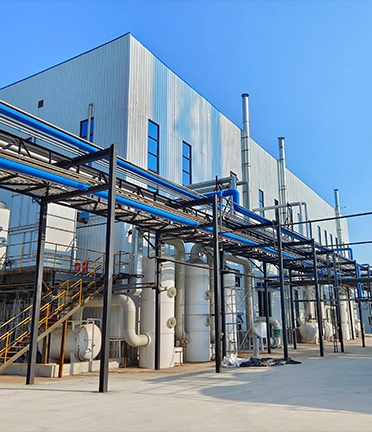coagulation and flocculation
Coagulation and Flocculation A Comprehensive Overview
Coagulation and flocculation are essential processes widely used in water treatment, wastewater management, and various industrial applications. These two interconnected processes play a crucial role in removing suspended solids, colloidal particles, and other pollutants from liquids. Understanding these processes is imperative for ensuring clean water supply and maintaining environmental health.
Coagulation The Initial Step
Coagulation is the first step in the water treatment process. It involves the addition of coagulants—chemical substances that destabilize colloidal and suspended particles in water. Common coagulants include aluminum sulfate, ferric chloride, and polymeric coagulants. When these chemicals are added to water, they neutralize the charges on the particles, which are typically negatively charged.
The neutralization of charge leads to the aggregation of particles, marking the beginning of the coagulation process. This step is crucial because suspended particles that carry a similar charge repel each other, preventing them from clumping together. By neutralizing these charges, coagulants allow particles to overcome their electrostatic repulsion and begin to form larger aggregates.
Flocculation The Following Phase
Once coagulation has occurred, the next step is flocculation. Flocculation involves the gentle mixing of water to encourage the formation of larger aggregates, known as flocs. During this process, the small coagulated particles collide and stick together, forming larger, denser flocs that can be easily removed from the water through sedimentation or filtration.
Flocculation typically occurs in a series of stages. Initially, the water may be mixed rapidly to create turbulence. As the agitation slows down, the conditions become more favorable for small particles to collide and merge. Optimal flocculation conditions depend on various factors, including the type and concentration of coagulants used, water temperature, pH levels, and the duration of mixing.
Importance of pH and Temperature
Both coagulation and flocculation processes are significantly influenced by the water’s pH and temperature. For instance, different coagulants function optimally at specific pH levels. Aluminum sulfate, for example, performs best in a slightly acidic environment. Regular monitoring and adjustment of these parameters are critical to achieving efficient treatment.
coagulation and flocculation

Additionally, temperature affects the kinetics of particle interactions. Higher temperatures generally increase particle mobility, which can accelerate both coagulation and flocculation. However, excessively high temperatures may also lead to reduced treatment efficiency and require adjustments in coagulant dosages.
Application in Water Treatment
The applications of coagulation and flocculation extend beyond municipal water treatment facilities. They are also employed in various industrial settings, including food and beverage production, paper manufacturing, and oil refining. In these contexts, the treatment of wastewater is crucial for minimizing environmental impact and adhering to regulatory standards.
In water treatment plants, coagulation and flocculation are typically followed by sedimentation, where flocs settle at the bottom of treatment tanks. The clear water that remains on top is then subjected to additional treatment stages, such as filtration and disinfection, before being distributed for public use.
Challenges and Future Directions
Despite their effectiveness, the coagulation and flocculation processes face challenges. The selection of appropriate coagulants and optimization of dosages can be complicated due to variations in water quality. Additionally, the production and disposal of sludge generated during these processes present environmental concerns.
Innovative approaches and technologies are being explored to enhance coagulation and flocculation efficiency. Research into natural coagulants, such as plant-derived substances, is gaining interest due to their eco-friendly characteristics. Furthermore, advances in automation and real-time monitoring enable operators to optimize treatment processes dynamically, adapting to changing water quality conditions.
Conclusion
Coagulation and flocculation are vital processes in ensuring the purity of water supplied for various uses. Through effective removal of contaminants, these processes contribute significantly to public health and environmental protection. As technology advances and challenges are addressed, the future of coagulation and flocculation holds promise for increasingly efficient and sustainable water treatment solutions. Emphasizing continued research and development in this field will be essential to meet the growing demands for clean water in a world facing significant environmental pressures.
-
Understanding Polycarboxylic Acids: Properties, Applications, and Future PotentialNewsJul.28,2025
-
Scale Inhibitor Explained: How to Protect Your System from Limescale and Hard Water DamageNewsJul.28,2025
-
Scale and Corrosion Inhibitors: Essential Chemicals for Industrial Water System ProtectionNewsJul.28,2025
-
Polyaspartic Acid: A Biodegradable Polymer for Sustainable ChemistryNewsJul.28,2025
-
Isothiazolinones: A Versatile Antimicrobial Class with Industrial Power and Regulatory ChallengesNewsJul.28,2025
-
A Deep Dive into 2-Phosphonobutane-1,2,4-Tricarboxylic Acid (PBTC)NewsJul.28,2025





